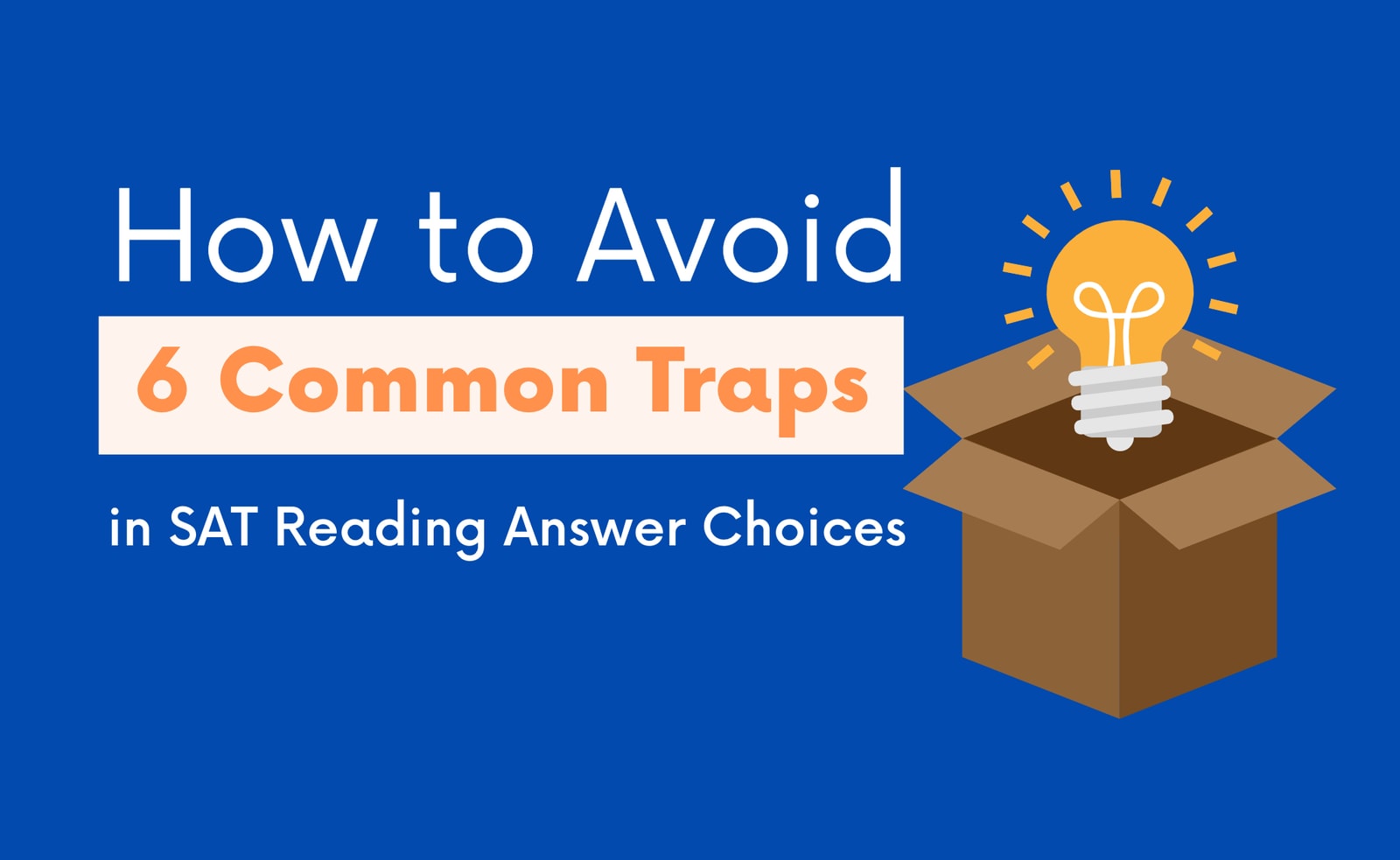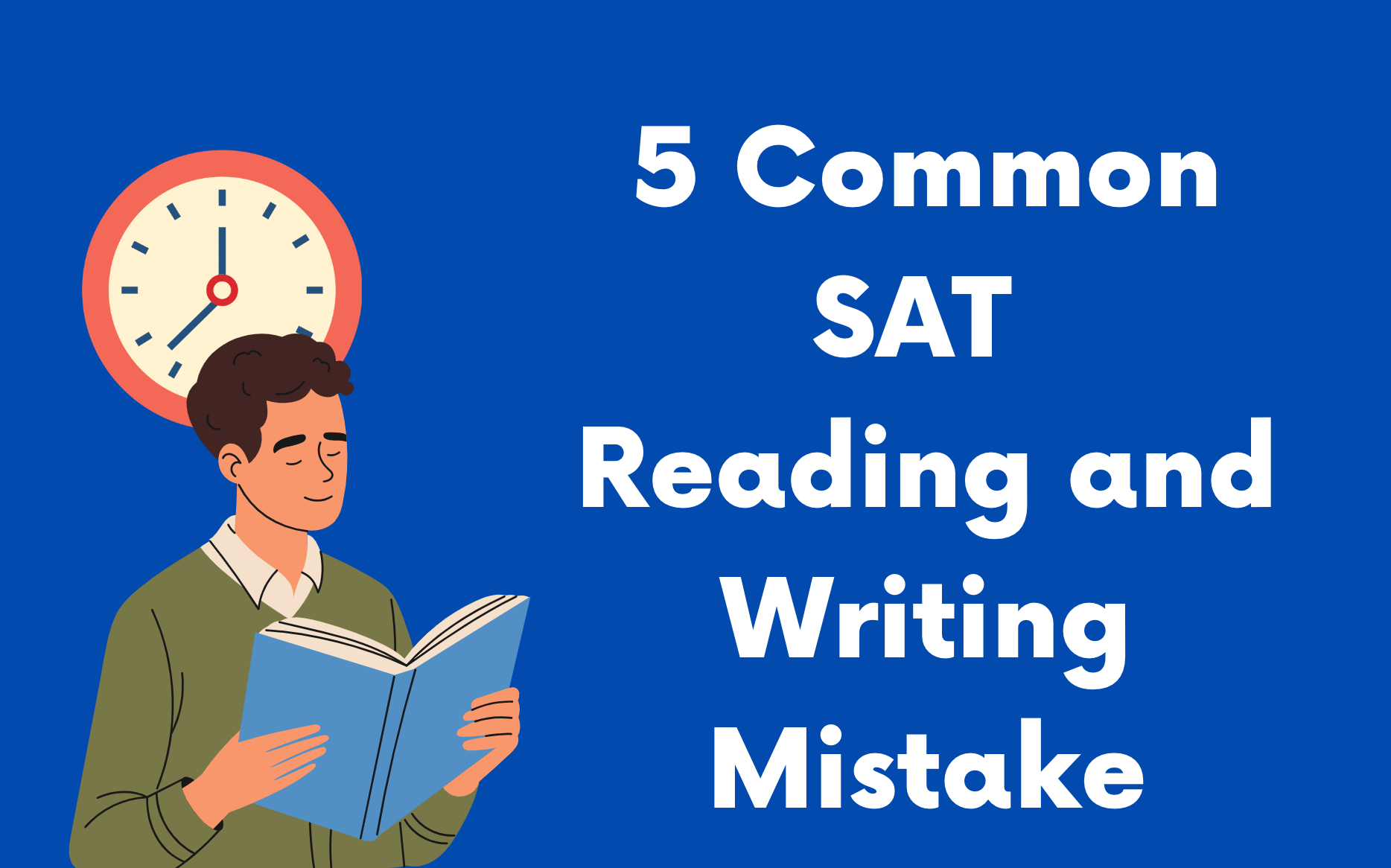How to Avoid 6 Digital SAT Reading Traps Using Best SAT Score
Author
Phoenix Wilder
Date Published

Do you ever feel like Digital SAT Reading Comprehension is a mind game run by mysterious test-makers? You study the passage, cross out a few options, but get stuck between two choices that both seem right. You pick one—often by gut feeling—only to find out you picked the wrong one again! This isn’t about reading too little or not being “good at English”—it’s about understanding the logic behind SAT answer construction, and, more importantly, the logic behind why three out of every four choices are purposely, and often trap-ingly, wrong.
The good news: SAT doesn’t require you to read minds, just to train yourself to see why each wrong answer is actually wrong. Once you master recognizing these flaws, picking the only right answer becomes a matter of method, not luck.
Why Focus on Wrong Answers?
Many students focus too much on “finding the one best answer.” But the real SAT skill is methodically eliminating the three wrong answers for clear, concrete, text-based reasons. When you can do that consistently, the correct answer is easy to spot—even if it feels subtle or less “absolute.”
Let's break down the six most common ways the Digital SAT (DSAT) makes answers wrong, with real examples and practical strategies for each. Then, discover how Best SAT Score, the all-in-one digital SAT prep platform, turns these insights into your everyday practice routine.
The 6 Common Flaws in Incorrect SAT Reading Answers
1. Not in the Passage
The Trap:
These answers include information, ideas, or details that simply don’t appear anywhere in the passage. They're the classic "sounds good, but not stated" trap.
How to Spot:
Find direct textual evidence for every part of the choice. If you can’t, it’s not right—no matter how logical it seems.
Example:
Passage Excerpt:
Samir rolled up the worn sleeves of his sweatshirt, revealing intricate geometric tattoos on his arms. He got them after returning from a volunteer trip abroad – a reminder of the people he met. Despite living now in chilly Chicago, he still wore his trusty hiking boots daily, hidden beneath faded grey cargo pants, the only pair he owned because, as he put it, “they just feel right.”
Question: What does the passage support about Samir’s clothing?
A. He chooses comfort over everything else.
B. The volunteer group gave him free clothes after his trip.
C. His clothes show wear and age.
D. He has only one sweatshirt.
Analysis:
(C) is correct: “worn sleeves” and “faded cargo pants” are direct evidence.
(A), (B), (D) aren't mentioned or supported by the passage. They might sound plausible, but they’re not in the passage.
Correct Answer: C
2. Too Specific
The Trap:
These answers add details or restrictions not found in the text, like extra numbers, times, places, or conditions.
How to Spot:
Watch for words that limit scope to something narrower or more specific than the passage itself says.
Example:
Passage Excerpt:
Pelicans fish with long beaks and throat pouches, scooping prey from the water. Their diets include fish, amphibians, small turtles, crabs, and sometimes even small birds. Many use “dive-bombing,” but they can also hunt cooperatively, especially near shores, forming lines to herd fish into the shallows.
Question: What can we infer from the passage?
A. Pelicans mainly eat fish in summer.
B. Only brown pelicans eat turtles.
C. Small aquatic animals are a primary food source for pelicans.
D. Most pelican hunting happens in shallow water.
Analysis:
(C) is correct: The passage lists multiple small aquatic animals as diet staples.
(A) adds “summer”—not mentioned.
(B) specifies “brown pelicans”—not mentioned.
(D) says most hunting is in shallows, but the passage only gives that as one cooperative strategy, not the exclusive or primary method.
Correct Answer: C
3. Too Narrow
The Trap:
These answers focus on a single small detail, presenting it as the main idea. These often trip up test-takers on “main purpose” questions.
How to Spot:
Ask: Does the choice sum up the main idea for the entire selection, or is it just about part of the passage or an example?
Example:
Passage Excerpt:
Museums, as we know them, trace their roots to 18th-century collections for elites. Originally, they displayed artifacts mainly for scholars. Now, museums offer education, cultural events, and digital outreach far beyond just showing objects.
Question: What is the main idea?
A. Museums developed from the 18th-century elite.
B. Museums still focus on elite scholars.
C. Museums’ activities have significantly widened from their original function.
D. Modern museums always offer digital resources.
Analysis:
(C) is correct: It covers the development from a narrow to a wide scope.
(A) is too narrow—only the origin.
(B) is factually wrong now.
(D) overstates with “always”—the passage says “many”, not all.
Correct Answer: C
4. Opposite or Distorted
The Trap:
Choice presents an idea that actually contradicts the passage, or misrepresents it (reverses cause and effect, polarizes, etc.).
How to Spot:
Double check if the answer “twists” something the passage actually says. Don’t get tricked by familiar keywords.
Example:
Passage Excerpt:
Ice formation at the poles makes seawater denser and saltier, which sinks and flows toward the equator, creating cold deep currents. Warm surface water moves poleward in return, moderating climate for coastal regions.
Question: What does the author claim about these ocean currents?
A. Cold water at the poles is replaced by warm water moving toward the equator.
B. The currents make coastal North Atlantic climates milder.
C. The system relies on polar ice melting.
D. Inland locations are warmer than the coast.
Analysis:
(B) is correct.
(A) reverses movement direction—the passage says warm water moves poleward.
(C) says “melting” starts the process; the text states it’s “freezing.”
(D) is opposite—coastal areas are milder, implying inland is colder.
Correct Answer: B
5. Could Be True (but isn’t stated)
The Trap:
Choices sound reasonable, perhaps based on common sense or outside knowledge, but there’s no explicit support in the passage.
How to Spot:
Ask: Is this my own guess, or can I point to lines in the text showing this fact or explanation?
Example:
Passage Excerpt:
A study found that in Copenhagen, 75% regularly cycle to work; in Portland, just 45%, despite more bike lanes in Portland. The passage says, “Infrastructure alone doesn’t explain the difference.”
Question: What point does the passage make?
A. Cultural habits probably explain the higher cycling in Copenhagen.
B. The difference in bike commuting isn’t just due to infrastructure.
C. Survey results could be inaccurate.
D. The researchers were surprised by results.
Analysis:
(B) is correct: This is directly stated.
(A) might be true but it’s your own inference, not proven in the text.
(C) and (D) aren’t stated.
Correct Answer: B
6. True Statement—But Doesn’t Answer the Question
The Trap:
The answer repeats information found in the passage but is irrelevant to what the question is actually asking.
How to Spot:
Carefully re-read the question stem—make sure the answer addresses what is being asked, not just something factually correct.
Example:
Passage Excerpt:
Dr. Sharma is studying how environmental stress may trigger rapid genetic changes. She plans to test her hypothesis on quinoa strains varying by altitude.
Question: What is the main purpose of the passage?
A. To describe Dr. Sharma’s background in genetics.
B. To explain a new hypothesis about rapid evolution and the plan to test it.
C. To summarize experiments on peas.
D. To highlight the popularity of quinoa.
Analysis:
(B) answers the main purpose (the overall focus).
(A) is true (her background is mentioned) but doesn’t answer main purpose.
(C) and (D) are not supported.
Correct Answer: B
Best SAT Score: Practice These Skills and See Results
Just knowing the common SAT answer flaws isn't enough. To excel, you must develop rapid, confident elimination skills on dozens of real SAT-style questions. Here's how Best SAT Score, the leading AI-powered all-in-one SAT prep platform, helps you master this approach:
Learning to consistently recognize these six types of incorrect answers is a game-changer for Digital SAT Reading Comprehension—it transforms the exam from a test of luck into a skillful process of evidence-based elimination.
But reading about these patterns isn’t enough. You need real practice applying this analytical mindset to hundreds of SAT-style questions. That’s where Best SAT Score comes in—the comprehensive SAT prep platform designed to take your test skills to the next level. Whether you’re struggling with the Reading section or just want to sharpen your technique, Best SAT Score offers everything you need to target and overcome your weaknesses.
Here’s how Best SAT Score empowers you to master SAT reading:
• Comprehensive Question Bank: Tackle thousands of SAT-style questions, each featuring carefully designed incorrect answers that cover all six common flaw types, so your recognition skills become second nature.
• In-Depth Explanations: Every question includes a step-by-step explanation not only pointing out the correct answer (with evidence), but clearly breaking down each distractor—labeling flaws like “Too Specific,” “Not in Passage,” or “Irrelevant”—so you learn actively from every mistake.
• Realistic Full-Length Adaptive Tests: Simulate the true Digital SAT experience with timed, adaptive full-length practice that trains you to apply process-of-elimination strategies under actual exam conditions.
Don’t let tricky answer choices hold you back. With Best SAT Score, you can finally trade guessing for confident, evidence-based elimination—and start seeing real improvement in your SAT Reading score. With our satisfaction guarantee, your progress is fully risk-free. Take the smart route to SAT Reading mastery with Best SAT Score!
Related Posts

Struggling with the Digital SAT Reading & Writing section? Discover 5 common mistakes students make and actionable tips to boost your score!

Master the SAT Reading section with essential strategies for big picture questions, enhancing your comprehension and boosting your score.